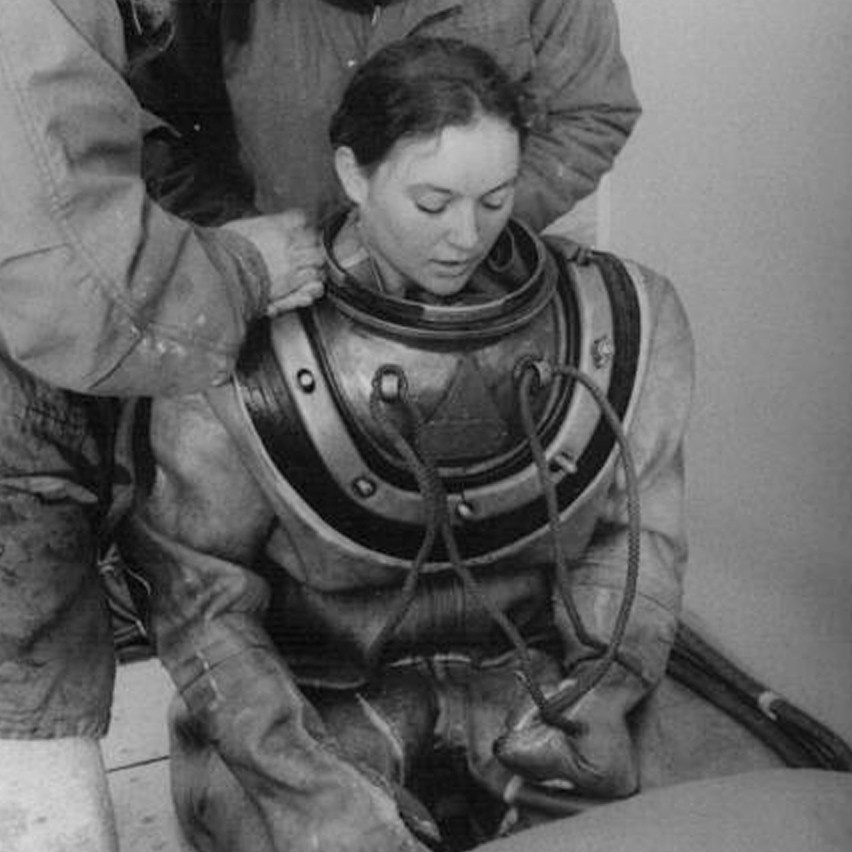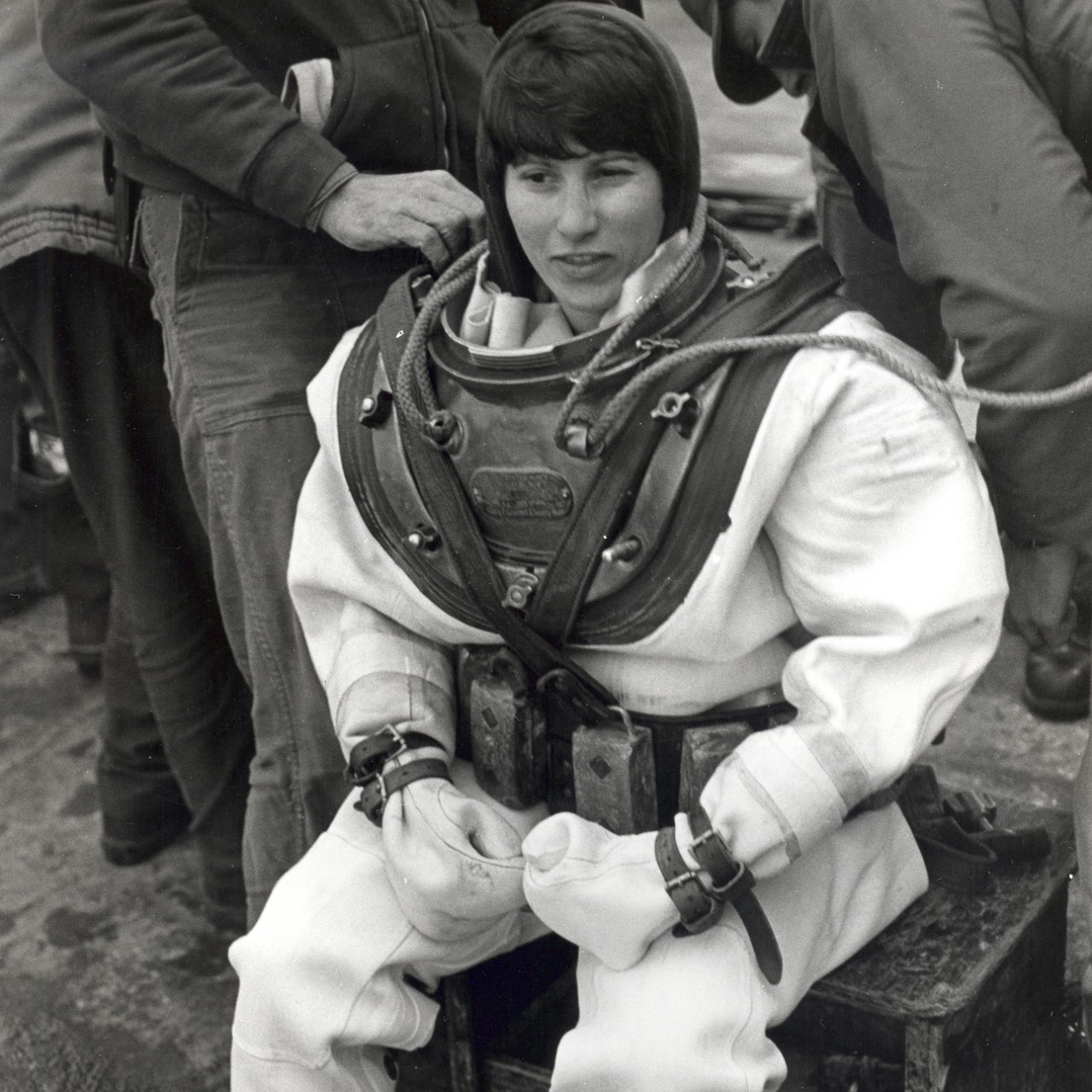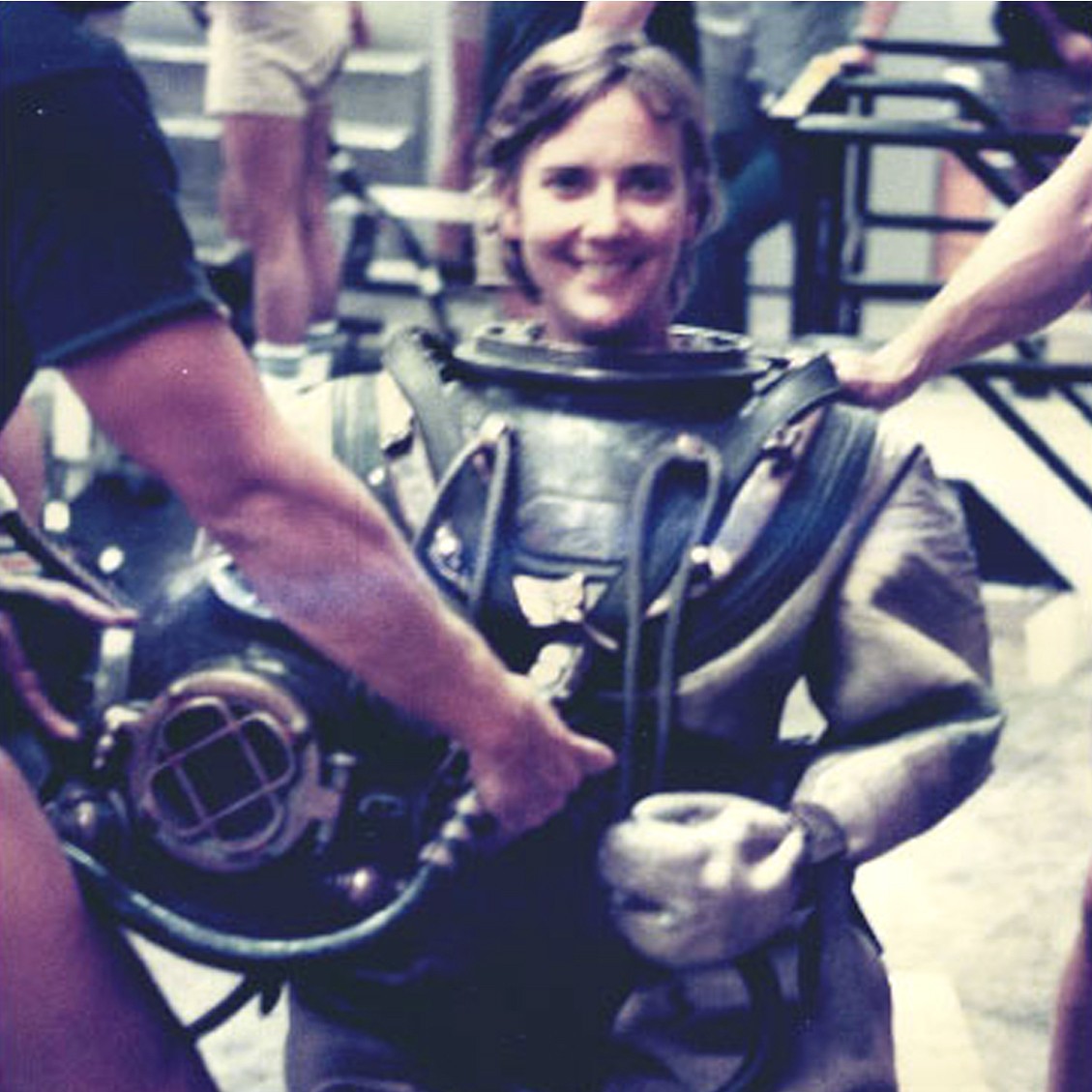Anatomy is Not Destiny
Diving officials often cited the physical differences between men and women to discourage women from becoming divers. Less upper body strength, less aerobic capacity, higher risk of the bends, hormonal differences, and pregnancy were used as reasons for them not to dive.
Medical science has disproved these ideas about women’s physiological fitness for diving. Today the primary restriction to diving is pregnancy. The physical qualification for women divers is the same as those for men: be physically fit and in good health.
Donna Tobias became the first woman to graduate from the Navy’s Deep Sea Diving School in 1975. She had to handle some 200 pounds of gear, including a Mark V dive helmet, weighted boots, and a heavy canvas suit. She dove in water that was often dark, cold, and turbulent, accompanied by men, some of whom were supportive and many more who resented her invasion of their domain.
“…since I was small, nothing fit well. The dive dresses were too big, the boots were too big, and the breastplate stuck over my shoulders by several inches. I sewed towels into my shirts, making me look like a football player. This allowed the breastplate to sit higher, giving me some room to move my arms up. I wore my shoes covered by a pair of socks inside the boots so that the boots would not fall off of my feet. My tenders had to put three leather belts on my arms so that when the suit pressurized, the gloves would not blow off of my hands (it didn’t work).”
Sue Trukken
“Showing up at the Navy dive school as a 5 foot 4 inch, 120-pound woman, I was met with some skepticism. Though a few men had a problem of a woman in a ‘man’s profession’, the critical fact was I was small and the Mark V diving rig I had to dive and climb out of the water in weighed close to 250 pounds in the dry.”
Marie Knafelc





